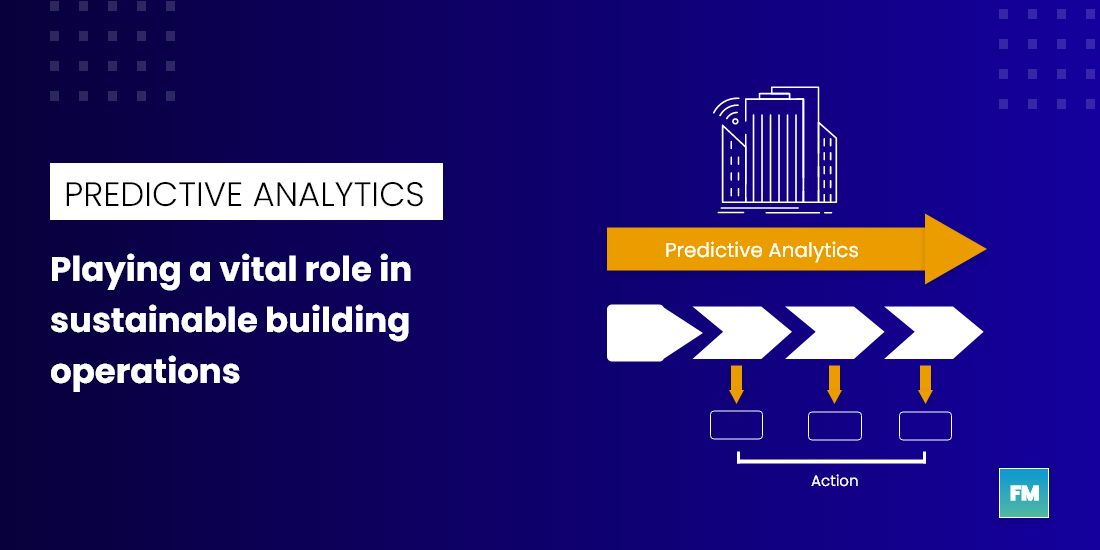In the past few years, concepts of the ‘Sharing economy’ are getting widespread across the globe. Products to services, creators to consumers, everyone who is part of the value cycle is taking responsibility for proper transactions and business continuity.
The commercial real estate sector, being one of the top energy consumption industries has been trying to incorporate multiple applications of the circular economy and sustainability principles to reduce resource consumption from design, material selection part of the process to operating or maintaining the building.
Applications of analytics are not new to the CRE sector, changing expectations from the tenants, increasing competition from the tech giants, facility operators are bound to leverage technology to survive and win the next bid. In a continuation of our efforts to discuss different aspects of analytics for the built environment, this article will shed a light on how predictive analytics can play a key driving factor to help your O&M team to become more operationally efficient.
Maintenance scheduling with Predictive Analytics
I am sure your O&M team must be using some kind of quarterly or monthly maintenance scheduling program. Now, these tools are part of the CAFM applications and come in handy to link inventory, help desk tasks during the maintenance process. However, besides all these features there is a huge value that can be created with the help of ‘Predictive analytics’.
If you are monitoring the granular level asset data, it can tell you a lot about the operation behavior of the asset, you can correlate the pattern with the surrounding context. For example relating the weather data with cooling required, the effect of occupancy on the air circulation, AHU filters, etc.
With the help of predictive analytics, you can identify the best time for the maintenance of a particular asset. Not every Chiller would need the same periodic maintenance, based on its running time and load capacity you can predict the next ideal time for the maintenance. This way your O&M team does not just save on time but also on the operational life of the asset.
Building Load Profiling: Optimizing Energy Demand
Understanding a building’s daily load capability and segregating it into baseload and peak load is not a new concept. There are multiple energy management applications are available to help you manage your peak load demand. However, most of the insights they provide are on the scheduling side of the operation, which is shifting the load to a different time band.
There is a missing link between the asset’s operational capability and forecasted demand which can be fulfilled with the help of predictive analytics. For example, If there is an annual function at your facility in the next week and you are expecting 2X visitors would be there to celebrate. Now, this seems a normal situation but what if we add one more aspect to it? It is sunny weather and the forecasted temperature would be higher than normal. Would you be able to shift the load? Of course not. But if you have sequencing data on the chiller and its capacity utilization you can optimally set up the right sequence for that day.
This can not be possible without knowing the optimum chiller sequencing and forecasting the load profile on that particular day.
Risk Modeling for Enhanced Asset Management
While assessing the existing data predictive analytics powered by AI can identify the anomalous behavior of the asset. The pattern which has never been seen before or an outlier point that has never occurred before can be falsely categorized as a failure if the right logic is not in fault detection diagnostic (FDD).
Predictive analytics can suggest and create all the sets of possible situations that assets can come across in the future, generating a valuable pattern database for the FDD logic to improve upon. Similar principles can be used in workplace management or budgeting of the facility.
Predictive analytics can scan through potential areas of risk from the massive number of data points collected across different aspects of the facility (O&M, Inventory, work order, tenant management, etc.) and use it to come up with the risk modeling to identify the situation that can impact on the day to day operations or the bottom line of the FM firm.
Leveraging Predictive Insights
There are other use cases where predictive analytics has proven a valuable resource to the FM teams. Most of the analytics applications come up with predictive insights, however, the logic and depth of insights may differ a lot. It is always ideal to take a trial of the application and understand all the variety of insights it can generate before deploying it.
In conclusion, predictive analytics is transforming the way energy management and sustainable building operations are conducted. Facility operators can optimise maintenance scheduling, improve energy demand management, and identify potential dangers proactively by utilizing advanced data analytics and AI-driven technologies. Leveraging predictive analytics can result in enhanced operational efficiency and cost savings, making it a vital tool for any forward-thinking O&M team in the commercial real estate sector.
How was your team’s experience with predictive analytics? Does any innovative use case your team has come across? We’d love to hear your insights!

Leave a Reply